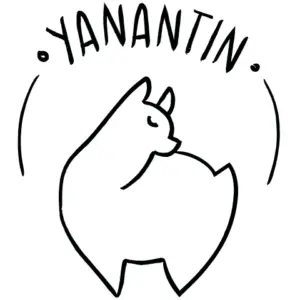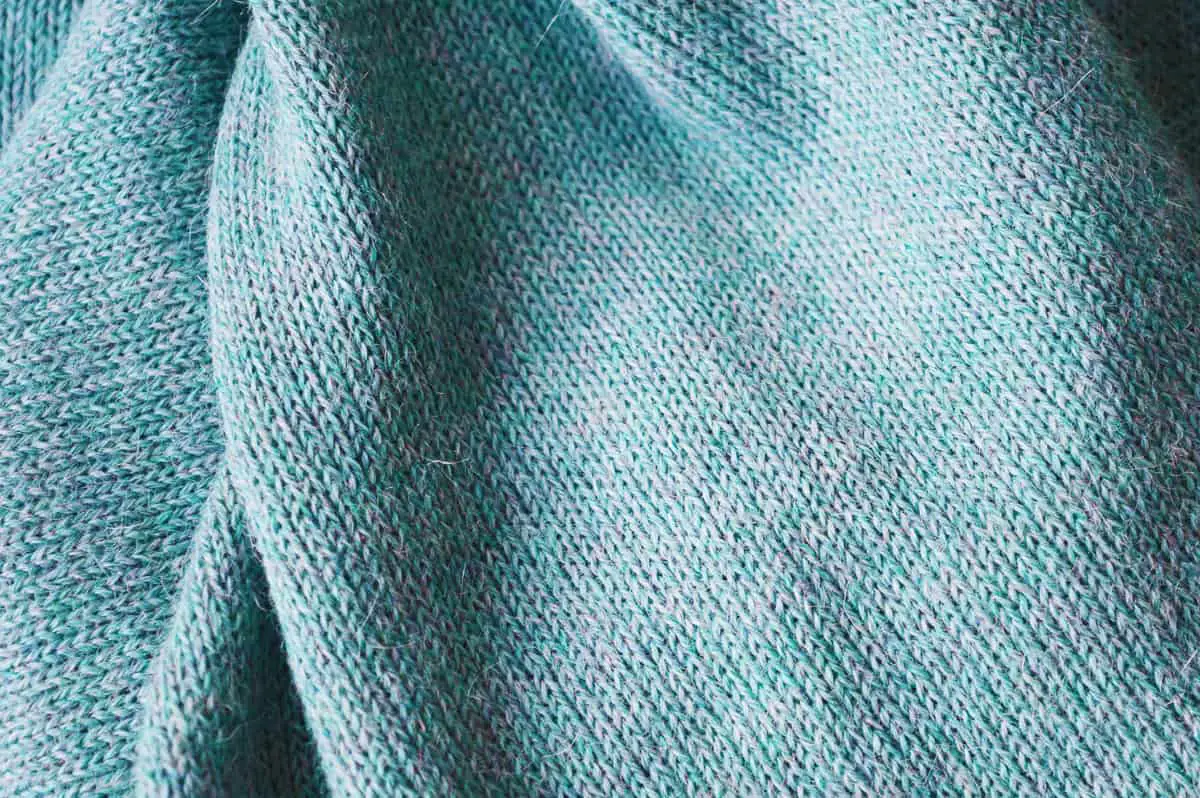Alpaca wool is a luxury fiber with amazing features and benefits. It also looks and feels amazing and is smooth and soft to the touch. What is it that makes the alpaca fiber so shiny?
cheap Ivermectin One of the greatest features of alpaca wool is its natural luster: it has an exclusive shiny and glossy look and feel to it. The alpaca fiber has a scale-like texture, with tiny microscopic scales that don’t cause coarseness to the fiber, naturally resulting in a shinier fiber.
Many fibers used for apparel and accessories are chemically treated to make them more lustrous, however, alpaca fiber naturally has an exclusive, luxurious, and soft look. On top of that, fiber luster brings some more shiny benefits. Let’s find out more.
What Is Luster?
Bochnia Luster refers to the shininess of a fiber. That means that some fibers are more lustrous than others. When a fiber is highly lustrous, it will reflect more light. Fibers that are not (so) lustrous, will reflect little to no light.
Luster gives fibers a luxurious look and feel to it, think of silk, for example. It is a quality that is often even given to non-lustrous fibers chemically. This process, however, damages the fiber and could potentially be harmful for the environment. Therefore, it is a great feature to have naturally.
A (naturally) lustrous fiber is also more likely to be soft, non-prickly, less likely to felt or shrink, and is easier to wear.
What Defines Fiber Luster for Alpaca Wool?
Not all alpaca fiber is equal. There are great differences in the animal’s fiber mostly caused by breed and age. Other factors, like sex and nutrition, can also play a role.
1. Breed
There are two different breeds of alpaca, the suri alpaca and the huacaya alpaca. The suri alpaca is much rarer than the huacaya alpaca, but is the one that provides a much more lustrous fiber. Hair from the suri alpaca has a clearly different scale structure and is bred for its luster.
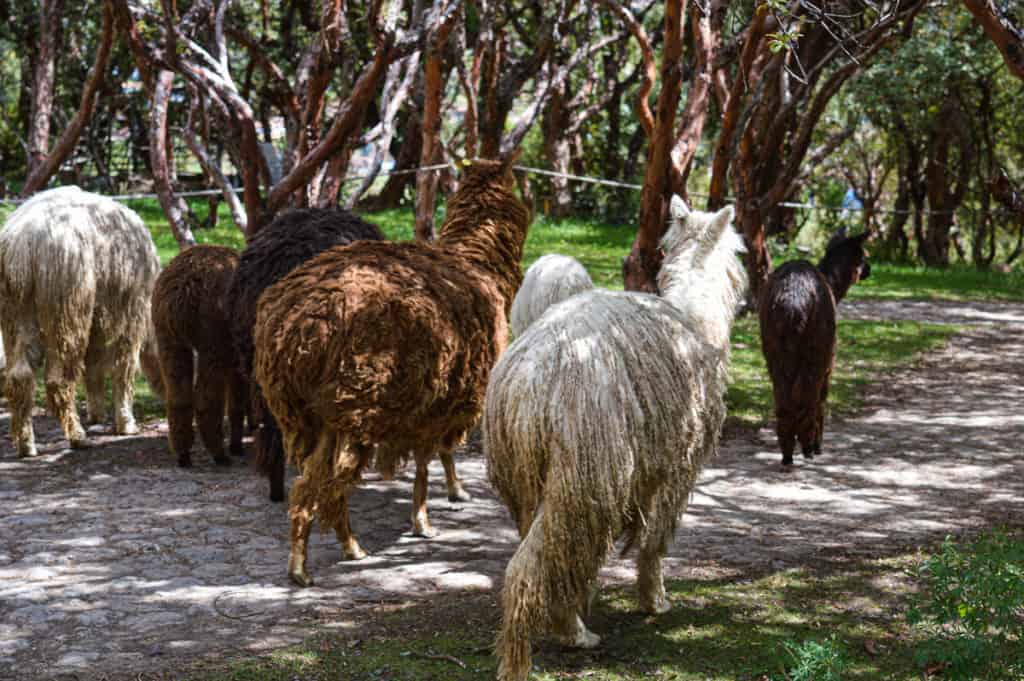
2. Age
Baby alpaca (the first cut of an animal’s fleece) is much less lustrous than a coarse fiber (from an adult alpaca). Alpacas generally don’t have a very shiny coat when they are younger, and with age, their fleece grows thicker and becomes more lustrous.
The thickness of a fiber (counted in microns) varies between 18 (royal alpaca) and 30 microns. The majority of the fibers that will be used for production will be between 23 (baby alpaca) and 27 microns. The micron count between these two categories of alpaca fiber is so small, that its luster won’t be that different.
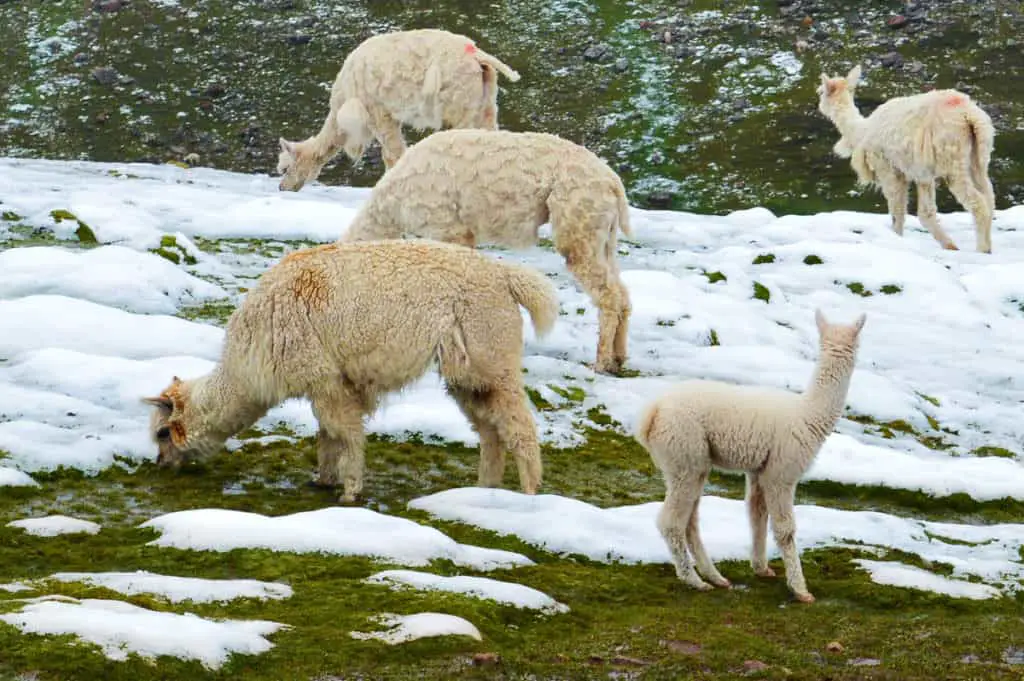
Nutrition, sex, sun exposure and whether an alpaca is pregnant can also influence the fiber structure of its hair.
3. Fiber Structure
Fiber luster is influenced by the fiber surface. In general, a coarse fiber with a smooth and clean surface will be more lustrous, while a fine underdown fiber will be less smooth and thus less shiny. This all depends on the structure of the fiber.
The alpaca fiber is generally very soft and often this is attributed to the scale-like texture of the hair. If you’d look at a microscopic close up of the fiber, you can see tiny scales that interlock on the surface of the hair. Compared to sheep wool, these fiber scales are much lower and smaller. They fit better together and make the fiber smoother.
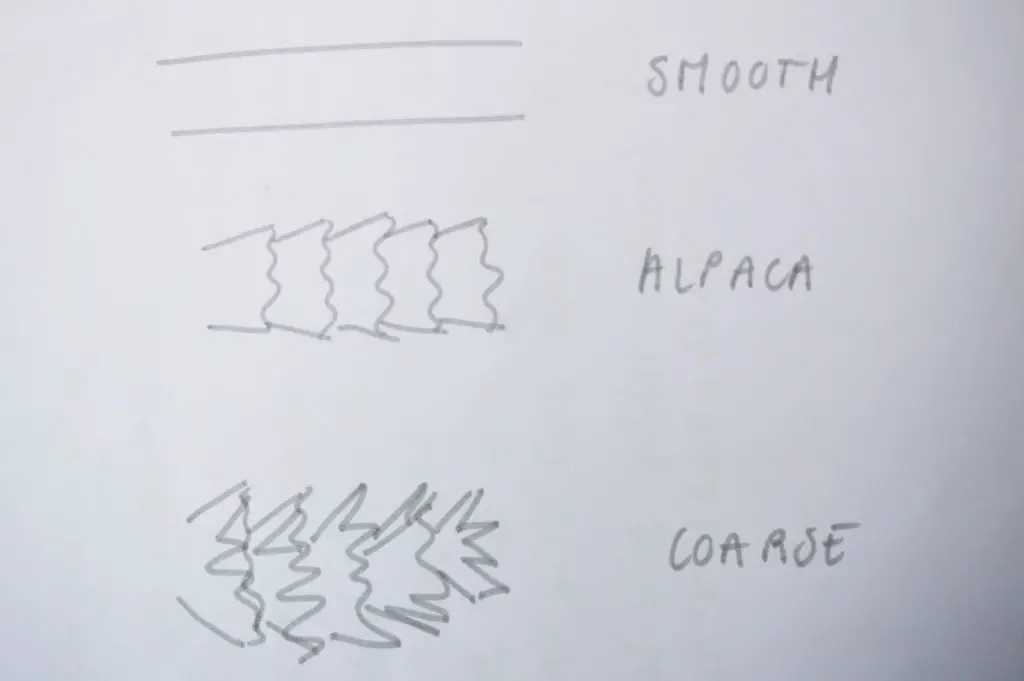
Why Is Luster Beneficial for the Wearer?
Since luster is a result of smaller scales, there’s more benefits for the wearer than just wearing a fancy-looking garment.
- The alpaca fiber texture also helps to prevent prickliness. It makes the wearer feel more comfortable wearing alpaca woolen products directly on the skin, as it is unlikely that you will feel the edges of the scales on your skin. Unless you have sensitive skin, you will feel only a little prickle from regular alpaca, and no prickle from baby alpaca.
- The scale-structure helps to create smooth and silky yarn or fabrics that are comfortable to wear. On top of that, alpaca wool has a great natural drapey way of wearing. So, it will look good, too.
- Low-scale edges also make alpaca wool less troublesome for people with allergies. Whereas regular wools pick up sand and dust and whatnot that can cause an allergic reaction (different from prickliness and lanolin-allergy), alpaca wool is much less likely to cause runny noses and teary eyes.
- It’s better for the environment.
Why Is Luster Beneficial for the Environment?
While some of you may think about the soft and shiny garment that you will be wearing, there is another very important benefit of high fiber luster: it is better for the environment.
One big and important reason is that higher scale height (those edges that you may or may not experience as prickly) causes the fiber to collect dust and dirt. When a fiber is dirty, it needs to be washed. If it is not dirty, it doesn’t need to be washed (as much).
Since the edges of the fiber scales are less noticeable, they also collect less dust and dirt, and thus need less washing. Alpacas yield about 90% of its fleece (source is a PDF), meaning that of everything that’s shorn off, 90% is usable. For sheep, this percentage is much lower (40-70%, click the link to learn more).
As you can understand, higher yield means better usage of resources (we’re still talking about living animals), less water being used in the process, fewer chemicals used to clean the fiber (scouring – in Wikipedia wool world language).
What Are the Downsides of Luster?
For some, having natural luster is not always a great benefit. Since it makes the fiber smoother, you could argue that it is more uncomfortable to wear as it might have a tendency of slipping. I have heard and read that people say alpaca wool is slippery. And even though this might be true only to a small degree, there’s something to say for it.
The same slipperiness can make alpaca wool hard to use for knitting. Machine and factory knitting should not experience any trouble using alpaca wool, but hand-knitters might need some real hands-on experience before they can manage alpaca wool.
- Interested in learning more about knitting with alpaca wool? I wrote a whole article about it that you can find by clicking the link: Can You Use Alpaca Wool for Knitting?
Why Is Alpaca Better than Polyester When it Comes to Luster?
Funnily enough, my very favorite (alpaca) and very least favorite (polyester) fibers are both super lustrous! While alpaca wool is naturally shiny, polyester is chemically shiny – like plastic.
Alpaca is a natural, renewable, biodegradable fiber, whereas polyester is not.
For the naked eye, it might be hard to recognize the difference between alpaca wool and polyester, as both of them will have a shiny appearance. If you look carefully, you will see that polyester is more plastic-like than alpaca. If you can’t tell by looking at the fibers, try feeling it: alpaca wool should be cold to the touch.
Recognizing REAL Luster
In this video I talk about how to recognize real alpaca wool. Luster is actually one of the characteristics of alpaca wool. Once you recognize the gloss you can quickly tell whether or not something is real alpaca wool!
Click to see more!
